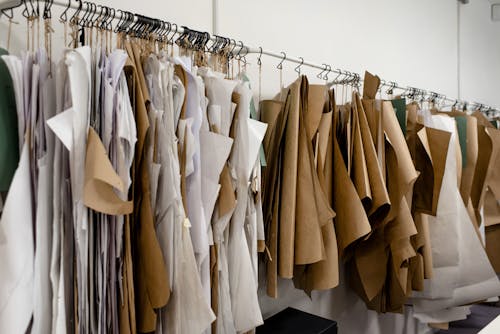Introduction: The 1990s was a decade marked by iconic fashion trends that continue to influence contemporary style. Characterized by bold colors, eclectic patterns, and a fusion of various subcultures, 90s fashion embraced individuality and self-expression. Let’s take a journey back in time to revisit some of the most memorable trends that defined this era.
Conclusion: The fashion landscape of the 1990s was a vibrant tapestry of diverse styles, reflecting the dynamic cultural and social movements of the era. From the grunge revolution to the rise of hip-hop influence, each trend offered a unique perspective on self-expression and identity. While the 90s may be gone, its fashion legacy continues to inspire and influence contemporary style, proving that true fashion never goes out of style.

- Grunge Revolution: One of the most influential fashion movements of the 90s was the grunge revolution. Inspired by the music scene, particularly bands like Nirvana and Pearl Jam, grunge fashion was characterized by its laid-back, effortless aesthetic. Flannel shirts, ripped jeans, oversized sweaters, and combat boots became staples of the grunge wardrobe. This anti-establishment style rebelled against the polished looks of the previous decade, embracing a more raw and authentic vibe.
- Minimalism: While grunge dominated the alternative scene, minimalism emerged as a contrasting trend in mainstream fashion. Championed by designers like Calvin Klein and Jil Sander, minimalist fashion embraced clean lines, neutral colors, and simple silhouettes. Slip dresses, oversized blazers, and tailored trousers epitomized the minimalist aesthetic, reflecting a shift towards understated elegance and sophistication.
- Hip-Hop Influence: The 90s saw the rise of hip-hop culture, which significantly impacted fashion trends during this period. Baggy jeans, oversized jerseys, tracksuits, and sneakers became synonymous with hip-hop style. Brands like Tommy Hilfiger and FUBU capitalized on the popularity of urban fashion, creating clothing lines that catered to the hip-hop community. Accessories such as chunky gold chains, snapback hats, and hoop earrings were also key elements of the hip-hop look, exuding confidence and street credibility.
- Techno Rave: The rave scene of the 90s brought about a unique fashion subculture characterized by vibrant colors, futuristic designs, and unconventional fabrics. Neon clothing, glow sticks, and platform shoes were common attire for ravers, who embraced an eclectic mix of rave, cyber, and punk aesthetics. The rise of electronic music festivals and underground raves fueled the popularity of this subversive style, providing a platform for self-expression and creative experimentation.
- Preppy Revival: In contrast to the alternative and urban styles of the decade, the preppy revival harked back to traditional, collegiate-inspired fashion. Polo shirts, cable-knit sweaters, pleated skirts, and khaki pants were wardrobe staples for those embracing the preppy look. Brands like Ralph Lauren and Gap capitalized on this trend, offering classic, timeless pieces that exuded a sense of refinement and privilege. The preppy revival symbolized a return to tradition and conservatism amidst the cultural shifts of the 90s.


Leave a Reply